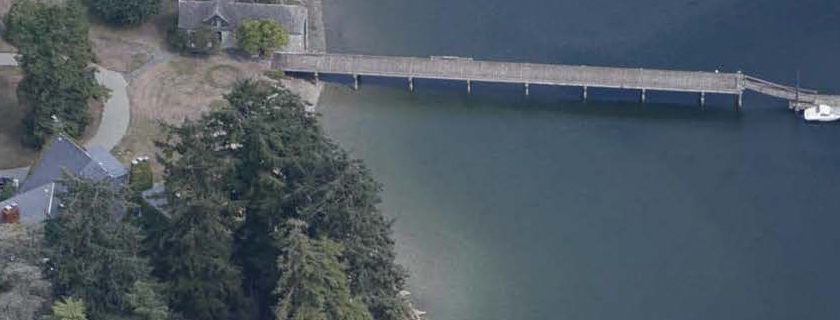Bainbridge Island, WA
NOAA’s Powel Living Shoreline Project
Erosion Issue: Private bulkheads were failing and becoming aesthetically unappealing, prompting the Powel family to seek a more environmentally-friendly solution to restore their extensive shoreline.
Project Technique and Background: In 2008, Washington Sea Grant and other project partners planned a living shoreline to replace the bulkheads. Project partners removed more than 1,500 linear feet of shore armor, along with its associated fill, and installed riprap wingwalls to protect infrastructure and reduce erosion risk to adjacent properties.
Partners planted native vegetation and removed invasive species in 33,000 square feet of riparian area. This work resulted in increased shallow intertidal area and salt marsh habitat without putting existing infrastructure at increased risk.
Habitat Value(s): The re-creation of shallow, intertidal and riparian habitat supports important biological processes, including the migration, feeding and refuge of juvenile salmon (particularly endangered Chinook salmon).
Site Resiliency: Part of this project involved an amendment to the Powel property’s conservation easement, enhancing the protection of the shoreline and riparian habitats in perpetuity. The project showcases the successful restoration of a private residential shoreline.
Partners: The Powel Family, Bainbridge Island Land Trust, Washington Sea Grant, Washington State Recreation and Conservation Office, Salmon Recovery Funding Board, Puget Sound Partnership, West Sound Watersheds Council, Suquamish Tribe, and others.
Before and After: Slide the bar to the left and reveal the change. Color changes are seasonal.

